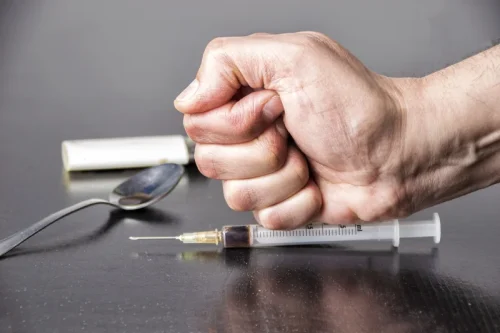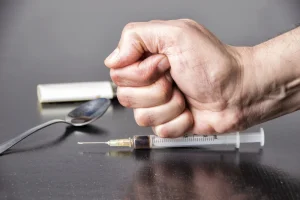
The evidence suggests that the free and flexible assistance provided by mutual-support groups can help people make and sustain beneficial changes and, thus, promote recovery. Recovery from AUD is marked by stages of abstinence, withdrawal, repair, and growth. While the process may take several years, the outcome is a happier, healthier life where you have the freedom to fulfill your full potential. The challenge of this stage is to essentially develop and maintain healthy life skills that will serve you for a lifetime. An exciting part of this period is that it can lead you to a happier life full of welcomed change and constant improvement. This stage typically starts 3–5 years after you’ve stopped drinking.

Treatments Led by Health Care Providers
Enter your phone number below to receive a free and confidential call from a treatment provider. Alcoholism, an informal term used to describe an alcohol use disorder (AUD), can be successfully treated, but using the term “cured” can lead to misunderstanding. People who have AUD may continue to use alcohol even though they know it is causing social, health, economic, and possibly even legal problems in their life.
Short Takes With NIAAA: What Are the Treatment Options for Alcohol Use Disorder?
Nevertheless, alcohol abuse can result in severe risks to physical and mental health, and to the individual’s relationships, responsibilities, and other pursuits. As described by the West Virginia University School of Public Health, even in the short-term, alcohol use has a high risk of injury and other dangers. Quitting alcohol cold turkey can cause serious or life-threatening symptoms, including death. Medically managed withdrawal or detoxification can be safely carried out under medical guidance.
- Alcohol use disorder (sometimes called alcoholism) is a common medical condition.
- How does the program or provider handle a return to drinking?
- And these communities make the person with an alcohol addiction accountable and provide a place to turn to if there is a relapse.
- Like many other substance use disorders, alcohol use disorder is a chronic and sometimes relapsing condition that reflects changes in the brain.
- This could mean an emphasis on therapy for someone who is depressed, or inpatient treatment for someone with severe withdrawal symptoms.
- Consider talking with someone who has had a problem with drinking but has stopped.
Do not sell my personal information Privacy Policy and Terms of Use
Studies show that strong family support through family therapy increases the chances of maintaining abstinence (not drinking) compared with people going to individual counseling. That said, there are four general stages of recovery, as compiled by addiction expert https://ecosoberhouse.com/article/tips-to-get-started-on-the-road-to-recovery/ Steven M. Melemis, MD. These stages can help prevent relapse and support people to live healthier, fuller lives. Instead, these are groups of people who have alcohol use disorder. Examples include Alcoholics Anonymous, SMART Recovery, and other programs.
Preventing alcohol use disorder

As defined by the American Society of Addiction Medicine, alcoholism – like other addictions – is a chronic brain disorder1. Similar to other chronic illnesses like asthma and can alcoholism be cured hypertension, alcoholism is not a condition that goes away after treatment. Instead, alcoholism treatment is meant to help individuals manage the condition throughout their lives so they will not relapse to alcohol use. Residential treatment programs typically include licensed alcohol and drug counselors, social workers, nurses, doctors, and others with expertise and experience in treating alcohol use disorder.

What is alcohol use disorder?
It can be hard to identify the lines between casual and occasional drinking and unhealthy alcohol use including alcohol use disorder. Inpatient or residential AUD treatment entails patients living and residing in the rehabilitation center 24/7. Inpatient alcohol rehab may vary in duration, sometimes consisting of short stays of 3–6 weeks, which may or may not be followed by attendance at an outpatient rehab.
- The doctor may also decide to run a variety of blood and neurological tests.
- You might not recognize how much you drink or how many problems in your life are related to alcohol use.
- Ask different programs if they offer sliding-scale fees—some programs may offer lower prices or payment plans for individuals without health insurance.
- Remember that your loved one is ultimately responsible for managing their own illness.
- This is a topic that continues to be of great debate in our society.
Detox
Alcohol use disorder (sometimes called alcoholism) is a common medical condition. People with this condition can’t stop drinking, even if their alcohol use upends their lives and the lives of those around them. While people with this condition may start drinking again, studies show that with treatment, most people are able to reduce how much they drink or stop drinking entirely.

Treatment Options
This will result in an assessment that will take in to consideration the individual’s age, as well as the person’s family and medical history. The doctor may also decide to run a variety of blood and neurological tests. These will determine if the alcoholism has caused any long-term effects. Once all the information is considered, the doctor can decide on the best course of treatment for the individual’s needs. Cognitive–behavioral therapy can take place one-on-one with a therapist or in small groups.